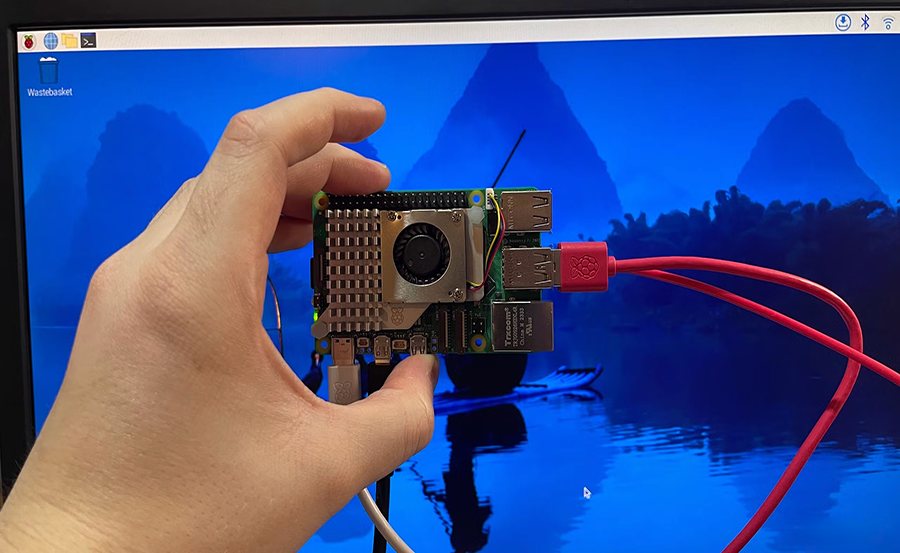Creating a digital audio workstation (DAW) can seem daunting, especially if you’re considering a compact, cost-effective solution like the Raspberry Pi. But don’t fret; this guide is here to show you how to transform this tiny powerhouse into a robust DAW that meets your personal or professional audio production needs. Along the way, we’ll highlight how Gen IPTV can add value to your setup, making it a must-have tool in your arsenal.
Why Choose Raspberry Pi for Your DAW?
The Raspberry Pi’s affordability and versatility make it an ideal candidate for building a DAW. Its compact size allows for a portable studio setup, meaning you can produce music from virtually anywhere. Additionally, with the right configuration and software, Raspberry Pi can handle most of the tasks a conventional DAW does.
Many opt for flagship DAWs that require powerful PCs, but Raspberry Pi offers a different approach. It’s not only budget-friendly but also efficient in terms of energy consumption. This means lower running costs and a smaller environmental footprint.
Pro Streaming Tip:
Get access to the best sports channels and live events with Sports IPTV for a comprehensive live sports experience.
Components You’ll Need
Before diving into the setup process, gather these essential components:
- Raspberry Pi board (preferably a Pi 4)
- Power supply compatible with Raspberry Pi
- MicroSD card (at least 32GB)
- External USB sound card or audio interface
- MIDI controller (optional but recommended)
These components form the backbone of your Raspberry Pi DAW, ensuring it can handle audio processing tasks efficiently.
Software Selection
Choosing the right software is crucial for your DAW’s performance. Here are some options tailored for Raspberry Pi:
Operating System: Raspbian, a Debian-based OS optimized for Raspberry Pi, is highly recommended. It provides a stable environment for audio software.
DAW Software: Consider using Audacity for basic audio editing or Tracktion T7 for more advanced production features. Both offer versions compatible with Raspberry Pi.
Setting Up Your Raspberry Pi DAW
Let’s get your Raspberry Pi DAW up and running. Follow these steps:
Install the Operating System
Install Raspbian onto your Raspberry Pi using an image writer tool. Once installed, ensure your system is up to date by running:
sudo apt-get update && sudo apt-get upgrade
Audio Interface Configuration
Configure your audio interface by connecting it to the Raspberry Pi via USB. Verify that your Pi recognizes the device with:
lsusb
If recognized, configure the audio interface settings using the ALSA utility:
sudo alsamixer
Installing DAW Software
Download and install your chosen DAW software. For example, to install Audacity, you would use:
sudo apt-get install audacity
Once installed, test the DAW to ensure your audio interface is properly integrated.
Enhancing Your DAW with Additional Tools
To maximize your audio production potential, consider incorporating additional tools and services into your setup.
Using MIDI Controllers
A MIDI controller can greatly enhance your production capabilities, providing hands-on control over your DAW. Choose a model that supports USB connectivity for seamless integration with Raspberry Pi.
With a MIDI controller, you can play and record virtual instruments, adding depth and complexity to your tracks.
Integrating Gen IPTV into Your Workflow
Though primarily known as a premium IPTV service, Gen IPTV can be a surprising ally in music production. Here’s why:
- Access to a wide range of music channels for inspiration
- High-quality audio streams to test your DAW’s audio output
- Live events and music shows for sampling ideas and techniques
GenIPTV offers not just television content but a gateway to global musical influences, boosting creativity and innovation in music production.
Optimizing Your Raspberry Pi DAW
Optimization is key to ensuring your Raspberry Pi DAW runs smoothly and efficiently. Here are some tips to enhance performance:
Overclocking the Raspberry Pi
Consider overclocking the Raspberry Pi to squeeze extra power out of it. However, be cautious as this may affect your device’s stability and lifespan. Always ensure adequate cooling before attempting overclocking.
Audio Latency Configuration
Minimizing audio latency is critical for a DAW. Adjust buffer sizes in your DAW software’s settings, usually found under the performance or audio settings menu. Lower buffer sizes reduce latency but may increase CPU usage, so find a balance that works for you.
You can also tweak the PulseAudio settings if you’re using it, adjusting the default fragment size and number to further reduce latency.
Streamlining Your Software
Remove unnecessary processes running in the background that may be consuming CPU resources. Use the htop command in the terminal to monitor active processes and manage them accordingly.
Also, limit the number of active applications while using your DAW to ensure maximum performance.
Exploring the Benefits of Gen IPTV
While setting up your DAW, don’t overlook the advantages that Gen IPTV can bring to your creative process. Besides its standard streaming capabilities, it offers unique benefits for musicians and producers alike.
Accessing a Global Music Library
GenIPTV provides access to a diverse global music library, letting you explore different genres and artists right from your workstation. This can spark inspiration for music styles and ideas you might not have considered.
Real-Time Music Trends
Stay updated with the latest music trends via Gen IPTV’s music channels, which broadcast current hits and emerging artists around the clock. It keeps you informed of industry standards, helping you craft music that resonates with global audiences.
Improving Learning and Collaborations
Gen IPTV’s educational channels can enhance your learning in music production, offering tutorials and workshops from industry experts. Furthermore, if you collaborate, sharing creative segments via IPTV networks can be an innovative, interactive experience.
Bringing it All Together
Building a DAW with Raspberry Pi is not just possible; it’s a rewarding venture. This compact setup serves both budding musicians and seasoned producers well by providing an affordable and flexible audio production solution.
By incorporating Gen IPTV into your workflow, you create a unique DAW environment rich with global influences, cutting-edge trends, and top-tier viewing experiences. Whether for inspiration, entertainment, or creative collaboration, Gen IPTV stands out as a premier choice in the world of premium IPTV services.
Frequently Asked Questions (FAQ)

What is the advantage of using Raspberry Pi for a DAW?
Raspberry Pi offers a cost-effective, portable, and energy-efficient platform for setting up a DAW. It’s suitable for those who want affordability without sacrificing functionality, especially with the right software.
How does Gen IPTV complement a DAW setup?
Gen IPTV adds value by providing access to a plethora of music channels, global trends, and educational content that can enhance creativity and keep you informed about the latest in the music industry.
Can I use other operating systems besides Raspbian for my DAW?
Yes, while Raspbian is recommended due to its optimization for Raspberry Pi, you can explore other Linux distributions like Ubuntu MATE or Manjaro, depending on your familiarity and comfort with those systems.
What should I consider when choosing an audio interface?
Look for an interface that offers good sound quality, low latency, and compatibility with Linux systems. The number of inputs and outputs will depend on your production needs and the size of your setup.
How do I minimize latency in my Raspberry Pi DAW?
Minimize latency by reducing buffer sizes, optimizing system processes, and fine-tuning audio settings in your DAW software. Ensuring updated drivers and efficient hardware setup also plays a crucial role.
Do I need a MIDI controller for my DAW?
While not strictly necessary, a MIDI controller can greatly enhance your DAW’s functionality by providing tactile input methods, which can streamline workflow and improve music production efficiency.
Is overclocking Raspberry Pi safe for DAW usage?
Overclocking can improve performance but comes with risks such as overheating and potential system instability. Ensure proper cooling solutions and incremental adjustments to maintain safety.
The Rising Demand for 4K IPTV Services

